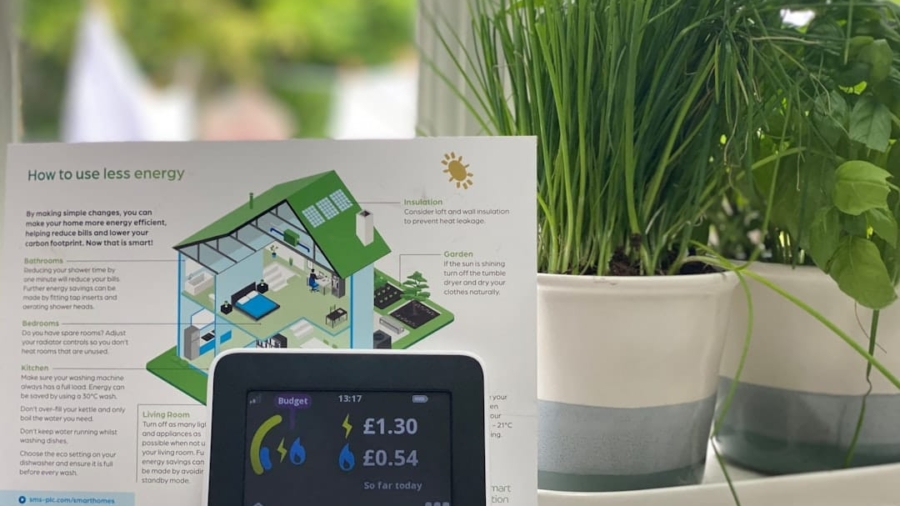The concept of smart homes has evolved significantly over the past two decades, transitioning from a futuristic dream to a tangible reality. Initially, the idea was primarily associated with high-tech gadgets and automation systems that promised convenience and efficiency. However, as technology has advanced, the definition of a smart home has expanded to encompass a wide array of interconnected devices that enhance not only convenience but also security, energy management, and overall quality of life.
The proliferation of the Internet of Things (IoT) has been a driving force behind this transformation, allowing various devices to communicate with one another and be controlled remotely through smartphones or voice-activated assistants. As smart home technology continues to gain traction, consumer interest has surged. According to a report by Statista, the global smart home market is projected to reach over $135 billion by 2025.
This growth can be attributed to several factors, including the increasing affordability of smart devices, advancements in wireless communication technologies, and a growing awareness of energy efficiency and sustainability. Homeowners are now more inclined to invest in smart home solutions that not only simplify their daily routines but also contribute to a more sustainable lifestyle. The integration of artificial intelligence (AI) into smart home systems has further enhanced their capabilities, enabling them to learn user preferences and adapt accordingly, thereby creating a more personalized living environment.
Key Takeaways
- Smart homes are becoming increasingly popular, with more and more households integrating smart technology into their living spaces.
- Wellness monitoring is being integrated into smart homes, allowing for the tracking of health and wellness metrics within the home environment.
- Technology plays a crucial role in wellness monitoring, with the use of sensors, wearables, and AI to collect and analyze data for health and wellness purposes.
- Integrated wellness monitoring in smart homes offers advantages such as early detection of health issues, personalized wellness plans, and improved overall health management.
- Challenges and concerns in integrating wellness monitoring include data privacy, security risks, and the potential for over-reliance on technology for healthcare needs.
Integrating Wellness Monitoring in Smart Homes
Proactive Health Management
This integration allows homeowners to take a proactive approach to their health by providing real-time data and insights that can inform lifestyle choices. For instance, smart beds equipped with sensors can track sleep quality by monitoring heart rate, breathing patterns, and movement throughout the night. This data can then be analyzed to provide personalized recommendations for improving sleep hygiene.
Personalized Fitness Tracking
Similarly, wearable devices such as fitness trackers can sync with smart home systems to monitor daily activity levels and encourage users to meet their fitness goals. By creating an ecosystem where health data is seamlessly collected and analyzed, smart homes empower individuals to make informed decisions about their well-being, ultimately leading to healthier lifestyles.
Empowering Healthier Lifestyles
The integration of wellness monitoring into smart homes has the potential to revolutionize the way we approach our health and wellness. By providing real-time data and insights, smart homes can empower individuals to take control of their health, make informed decisions, and adopt healthier lifestyles.
The Role of Technology in Wellness Monitoring

Technology plays a pivotal role in the effectiveness of wellness monitoring within smart homes. At the core of this integration are various sensors and devices designed to collect data on an individual’s health metrics. These devices range from simple wearables like smartwatches to more complex systems embedded within the home environment itself.
For example, smart thermostats can adjust temperature settings based on user comfort levels, which can indirectly influence sleep quality and overall well-being. Moreover, advancements in artificial intelligence and machine learning have enabled these technologies to analyze vast amounts of data quickly and accurately. By leveraging algorithms that can identify patterns and trends in health data, smart home systems can provide actionable insights tailored to individual users.
For instance, if a user consistently experiences poor sleep quality, the system might suggest adjustments in room temperature or lighting conditions based on historical data. This level of personalization not only enhances user experience but also fosters a deeper understanding of how environmental factors impact health.
Advantages of Integrated Wellness Monitoring in Smart Homes
The advantages of integrating wellness monitoring into smart homes are manifold, extending beyond mere convenience to encompass significant health benefits. One of the most notable advantages is the ability to track health metrics continuously and in real-time. This constant monitoring allows for early detection of potential health issues, enabling timely intervention before they escalate into more serious conditions.
For example, smart home systems can alert users if their heart rate or blood pressure readings fall outside normal ranges, prompting them to seek medical advice. Additionally, integrated wellness monitoring fosters a holistic approach to health management. By combining data from various sources—such as sleep patterns, physical activity levels, and even dietary habits—users gain a comprehensive view of their overall well-being.
This interconnectedness encourages individuals to adopt healthier lifestyles by making informed choices based on their unique health profiles. Furthermore, the convenience of having all this information accessible through a single platform simplifies the process of health management, making it easier for users to stay engaged with their wellness goals.
Challenges and Concerns in Integrating Wellness Monitoring
Despite the numerous benefits associated with integrated wellness monitoring in smart homes, several challenges and concerns must be addressed. One significant issue is the accuracy and reliability of the data collected by various devices. While many smart home technologies are designed to provide precise measurements, discrepancies can arise due to factors such as device calibration or user error.
Inaccurate data can lead to misguided health decisions, potentially compromising user safety. Privacy concerns also loom large in discussions about wellness monitoring in smart homes. The collection and storage of sensitive health data raise questions about who has access to this information and how it is used.
Users may be apprehensive about sharing their health metrics with third-party companies or even within their households. Ensuring robust data security measures and transparent privacy policies is essential for building trust among users. Additionally, regulatory frameworks governing the use of health data in smart homes are still evolving, which adds another layer of complexity to the integration process.
Future Trends in Smart Homes with Wellness Monitoring

As technology continues to advance at an unprecedented pace, several trends are emerging that will shape the future of smart homes with integrated wellness monitoring. One notable trend is the increasing use of artificial intelligence and machine learning algorithms to enhance personalization. Future smart home systems will likely become even more adept at analyzing user behavior and preferences, allowing for tailored recommendations that promote optimal health outcomes.
Another trend is the growing emphasis on holistic wellness solutions that address not only physical health but also mental and emotional well-being. Smart homes may incorporate features such as mood lighting or ambient soundscapes designed to create calming environments conducive to relaxation and stress reduction. Additionally, as telehealth services become more mainstream, smart homes could serve as hubs for remote healthcare consultations, enabling users to connect with healthcare professionals from the comfort of their living spaces.
Impacts on Healthcare and Wellness Industry
The integration of wellness monitoring into smart homes is poised to have profound implications for the healthcare and wellness industries. As individuals take greater control over their health through continuous monitoring and data analysis, traditional healthcare models may need to adapt accordingly. Preventive care could become more prevalent as patients leverage real-time data to identify potential health issues before they require medical intervention.
Moreover, healthcare providers may increasingly rely on data collected from smart home systems to inform treatment plans and patient care strategies. This shift towards data-driven healthcare could lead to more personalized treatment options tailored to individual needs.
The Future of Smart Homes: Privacy and Security Considerations
As smart homes become more integrated with wellness monitoring technologies, privacy and security considerations will remain paramount. Users must be assured that their sensitive health data is protected from unauthorized access or breaches. This necessitates the implementation of robust cybersecurity measures within smart home systems, including encryption protocols and secure authentication methods.
Furthermore, transparency regarding data usage is essential for fostering trust among users. Companies developing smart home technologies must clearly communicate how health data is collected, stored, and utilized while providing users with control over their information. As regulatory frameworks evolve to address these concerns, it will be crucial for stakeholders in the smart home industry to prioritize ethical practices that safeguard user privacy while promoting innovation in wellness monitoring solutions.
In conclusion, the rise of smart homes integrated with wellness monitoring technologies represents a transformative shift in how we approach health management. By leveraging advanced technology to monitor various aspects of well-being, individuals can take proactive steps toward healthier lifestyles while navigating the challenges associated with privacy and security concerns. As we look ahead, it is clear that the future of smart homes will be shaped by ongoing advancements in technology and an unwavering commitment to enhancing user well-being.
In a recent article on Enicomp, the best laptops for graphic design in 2023 were highlighted, providing valuable insights for professionals in the design industry. This article complements the discussion on smart homes with integrated wellness monitoring by emphasizing the importance of technology in various aspects of our lives. To read more about the best laptops for graphic design, check out the article here.
FAQs
What is a smart home with integrated wellness monitoring?
A smart home with integrated wellness monitoring refers to a home equipped with various smart devices and sensors that can monitor the well-being and health of its occupants. These devices can track vital signs, activity levels, sleep patterns, and other wellness-related data to provide insights and alerts for better health management.
What are the benefits of a smart home with integrated wellness monitoring?
The benefits of a smart home with integrated wellness monitoring include the ability to track and manage health and wellness in real-time, provide early detection of health issues, offer personalized recommendations for better health, and improve overall well-being and quality of life for the occupants.
What types of devices are used in a smart home with integrated wellness monitoring?
Devices used in a smart home with integrated wellness monitoring may include smartwatches, fitness trackers, smart scales, blood pressure monitors, sleep trackers, smart thermostats, air quality monitors, and other connected wellness devices. These devices can communicate with each other and with a central system to provide a comprehensive view of the occupants’ health and wellness.
How does integrated wellness monitoring work in a smart home?
Integrated wellness monitoring in a smart home works by collecting data from various wellness devices and sensors, analyzing the data to provide insights and alerts, and using this information to create personalized wellness plans for the occupants. The system may also integrate with healthcare providers to share relevant health data and receive professional recommendations.
What are the privacy and security considerations for a smart home with integrated wellness monitoring?
Privacy and security considerations for a smart home with integrated wellness monitoring include ensuring that the data collected is secure and only accessible to authorized individuals, obtaining consent from the occupants for data collection and sharing, and implementing robust security measures to protect against unauthorized access or data breaches. It is important to choose reputable and trusted brands for wellness devices and to regularly update and maintain the security of the smart home system.

